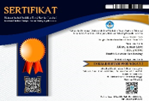MAKROZOOBENTOS SEBAGAI INDIKATOR BIOLOGIS DALAM MENENTUKAN KUALITAS AIR SUNGAI RANOYAPO, MINAHASA SELATAN, SULAWESI UTARA
DOI:
https://doi.org/10.35799/jis.13.1.2013.2033Abstract
MAKROZOOBENTOS SEBAGAI INDIKATOR BIOLOGIS DALAM MENENTUKAN KUALITAS AIR SUNGAI RANOYAPO, MINAHASA SELATAN, SULAWESI UTARA
ABSTRAK
Sungai Ranoyapo merupakan sungai terpanjang di Wilayah Minahasa dengan panjang sekitar 60, 5 Km. Sungai Ranoyapo adalah sungai utama  DAS Ranoyapo yang memiliki luas sekitar 87,154 Ha. Sungai Ranoyapo melintasi kawasan pertanian, perkebunan, permukiman penduduk, dan industri. Limbah yang berasal dari kawasan tersebut mempengaruhi kualitas air Sungai Ranoyapo. Makrozoobentos dapat digunakan sebagai parameter biologi dalam menentukan kondisi sungai karena hidupnya relatif diam di dasar sungai.   Penelitian ini bertujuan untuk menentukan kualitas air Sungai Ranoyapo berdasarkan indeks keanekaragaman makrozoobentos.   Penelitian dilakukan pada musim hujan yaitu Januari-Maret 2013.  Lokasi penelitian ditentukan dari bagian hulu, tengah dan hilir sungai dengan 3 ulangan di tiap lokasi.   Kualitas air Sungai Ranoyapo ditentukan berdasarkan indeks keanekaragaman makrozoobentos dari Shannon Wiener (H’) menurut kriteria                  Staub et al (1970).  Makrozoobentos di Sungai Ranoyapo terdiri dari 3 Filum, 5 Kelas, 13 Bangsa, 21 Suku, dan 23 Marga. Indeks keanekaragaman makrozoobentos dari Stasiun I (hulu), Stasiun II (tengah) dan Stasiun III (hilir) yaitu 2,43; 2,06; dan 1,77. Kualitas air Sungai Ranoyapo di Stasiun I dan di Stasiun II telah tercemar ringan dengan indeks       H’: 2,0 – 3,0 (H’>2).   Kualitas air Sungai Ranoyapo di Stasiun III telah tercemar sedang dengan indeks     H’ sekitar 1,0 – 2,0 (H’ <2).
Kata kunci: Sungai Ranoyapo, kualitas air, pencemaran air, keanekaragaman makrozoobentos
MACROZOOBENTHOS AS BIOINDICATOR IN DETERMINING WATER QUALITY OF RANOYAPO RIVER, SOUTH MINAHASA, NORTH SULAWESI
ABSTRACT
Ranoyapo River is the longest river in the Minahasa Region with its length of 60.5 Km. Ranoyapo River is the main river watershed Ranoyapo which its area of 87.154 ha. Ranoyapo River crosses agricultural, plantation, resident, and industry areas. Waste originated from those areas will affect water quality of Ranoyapo River. Macrozoobenthos can be used as a biological parameter in determining the condition of the river because they relatively slow move on the riverbed. This study aims to determine the water quality of the River Ranoyapo based on biodiversity index of macrozoobenthos. The study was conducted during the rainy season i.e. from January to March 2013. Three locations were chosen from upstream, midstream and downstream river with 3 replications in each location. The quality of Ranoyapo River was determined by the biodiversity index Shannon Wiener (H') of macrozoobenthos using classification of Staub et al (1970. Macrozoobenthos of Ranoyapo River consisted of 3 Phyla, 5 Classes, 13 Orders, 21 Families, and 23 Genus. Biodiversity index (H’) of macrozoobenthos from up (Station I), middle (Station II) and downstream (Station III) respectively were 2.43; 2.06, and 1.77. The quality of Ranoyapo River at up and middle were lightly polluted with index H’: 2.0 to 3.0 (H '> 2.0) and at down was moderately polluted with index H ': 1.0 to 2.0 (H' <2).
Keywords: Ranoyapo River, water quality, water pollution, macrozoobenthos biodiversity






